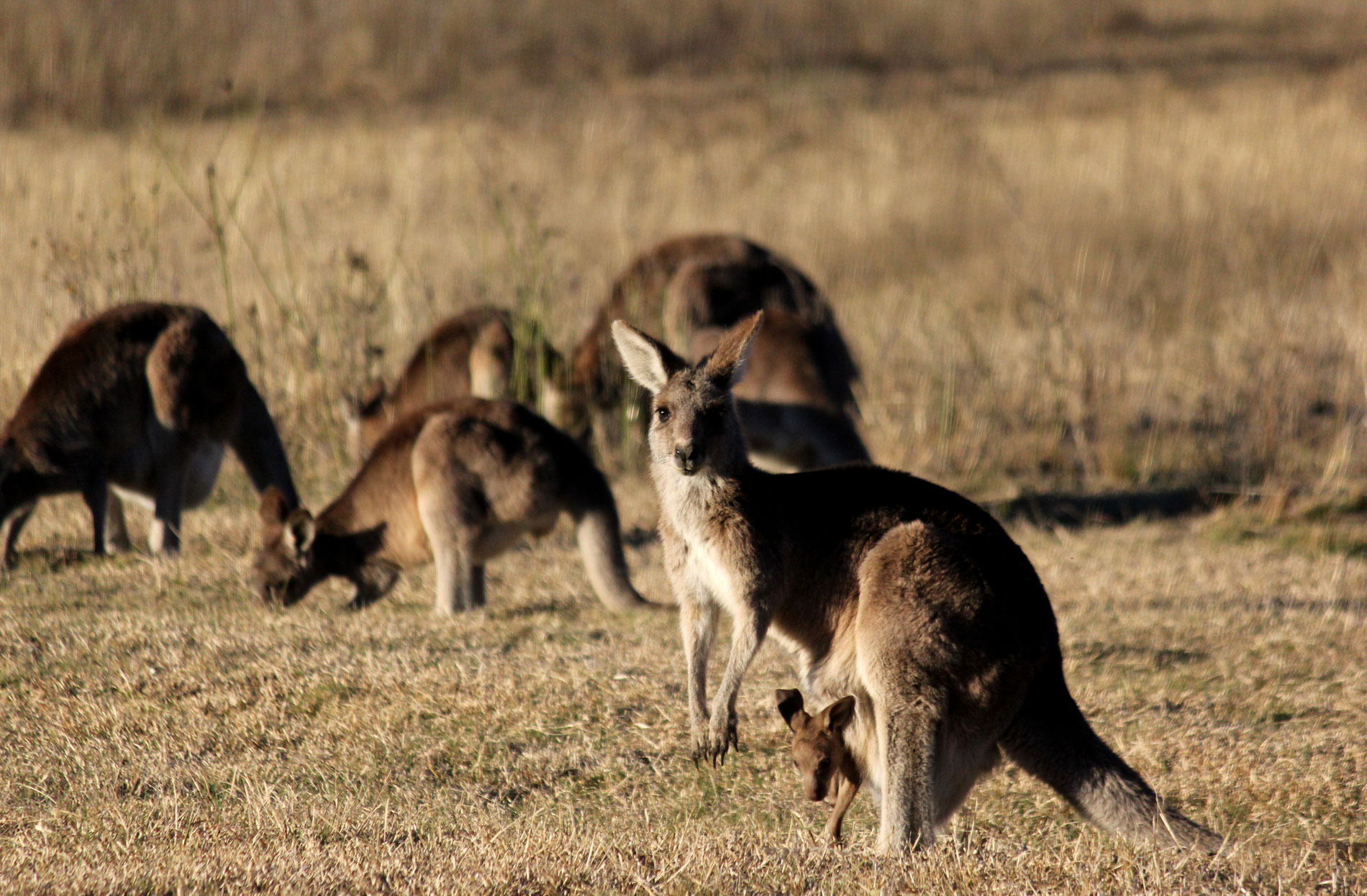Studies from around the world have shown the importance of refuges, or refugia, for wildlife especially during difficult climatic periods such as ice ages. During ice ages, the climate cools and dries allowing mesic habitat such as grasslands and open eucalypt forests to expand. At the same time, rainforests and the animals that depend on them, retreat into refuges to survive the cold, dry times. Conversely, during interglacial periods, such as now, the climate is much warmer and wetter allowing rainforests the ability to expand and mesic habitats correspondingly contract.
A recent study by researchers at the University of Queensland (UQ) looked at how Eastern Grey Kangaroos in South East Queensland (SEQ) have responded genetically to climate fluctuations over time. They determined that there is a distinct genetic population of kangaroos on the Sunshine Coast that are probably climate ‘refugees’. These kangaroos probably expanded into the Sunshine Coast during a past glacial maximum, or ice age, and when the climate started to warm, the kangaroos stayed put in suitable habitat and in effect became isolated. They now live in, what is called, a mesic refugia.
While many studies have been undertaken on Queensland rainforest refugia, not many studies exist regarding mesic refugia and the animals that depend upon them.
Eastern Grey Kangaroos depend on mesic habitats and are relatively easy genetic subjects given that their DNA can be extracted from faeces. Other studies into Eastern Grey Kangaroos already showed that there is a genetic difference between inland Queensland individuals and those in southern NSW, Victoria and Tasmania. This UQ research set out, and succeeded, to genetically map the Eastern Grey Kangaroo populations of SEQ and northern NSW in more detail.
The study successfully sequenced the DNA of 256 samples and found five distinct ‘clades’ of Eastern Grey Kangaroos, as follows:
1. A Sunshine Coast clade.
2. A Northern clade (individuals from Qld (e.g. inland Qld, Wacol, Somerset, Scenic Rim) and south to Glen Innes and Moree).
3. A Central clade (individuals from Vic, Tas and NSW)
4 & 5. NSW clade with only individuals from NSW.
The limited geographic range of the Sunshine Coast clade suggests that these kangaroos have survived in this mesic refugia for a long time, as genetic variance takes time to evolve.

The Sunshine Coast clade currently overlaps with the Northern clade around Murgon, Kingaroy, Buderim and North Lakes. The boundary of these clades and their genetic make-up is always in flux whether the cause be climate shifting, human-made expansion of kangaroo habitat, human-caused habitat fragmentation or the release of rehabilitated kangaroos into different clades.
It is fascinating to think about how this country has changed over time. For the past 50,000 years, people, plants and animals have had to adapt to climatic fluctuations, just as future generations will have to do. Although the difference now is that the fluctuations are occurring at a significantly more rapid and uncharted rate than ever before. Therefore, the ability of plants, animals and people to adapt is also uncharted.
Reference & Further Reading
Coghlan BA, Goldizen AW, Thomson VA, Seddon JM (2015) Phylogeography of Eastern Grey Kangaroos, Macropus giganteus, Suggests a Mesic Refugium in Eastern Australia. PLoS ONE 10(5).
Article by Deborah Metters Land for Wildlife Regional Coordinator SEQ Catchments

They are clearing land at 5 Sippy Downs drive now and there are quite a few families of kangaroos. Can they be relocated otherwise they will end up roadkill on the motorway